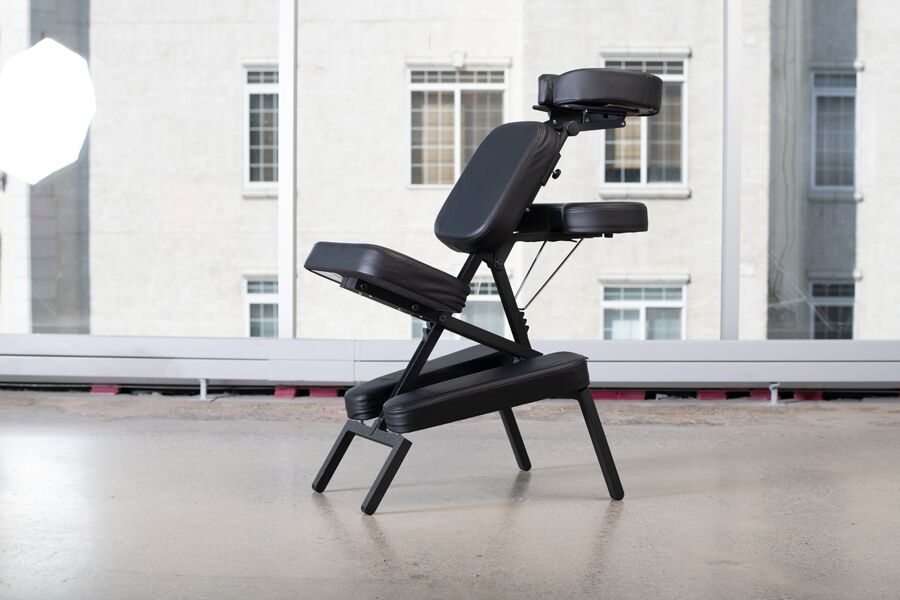Vitrectomy Recovery Guide
Welcome to your Vitrectomy Recovery Guide. This guide will help you navigate questions you have about the surgery, recovery, and the rental process.
Please note that we do not offer, nor are we qualified to offer specific medical advice. Please consult your doctor for medical advice.
This guide is divided into four sections: surgery, equipment, usage, and about the company.
Please note that we do not offer, nor are we qualified to offer specific medical advice. Please consult your doctor for medical advice.
This guide is divided into four sections: surgery, equipment, usage, and about the company.
Surgery
What is a vitrectomy?
A vitrectomy is a surgery where a retina specialist drains the vitreous gel from the eye cavity. This is done to create better access to the retina for other surgeries such as removal of ocular scar tissue, laser repair of retinal detachments, and treatment of macular holes.
What is the gas bubble?
At the end of the surgery, an eye doctor may inject an oil or gas bubble into your eye. This bubble will apply pressure on your retina and hold it in place during your healing and recovery phase. Initially, this bubble will make your vision blurry. As your recovery period progresses, the bubble is gradually replaced by your eye’s own fluids and decreases in size until your vision returns to normal.
What is vitreous gel?
Vitreous gel is the gel-like fluid that fills up in the space in the middle of the eye, immediately behind the lens. The purpose of vitreous gel is to help the eyeball maintain its shape.
How long will the surgery take? How invasive is it?
A vitrectomy is a relatively quick and minimally painful surgery that can take from as little as 30 minutes to up to 3 hours to complete. The surgery can be done under either local or general anesthesia.
Local anesthesia is applied to just the area in which the procedure is done, which in this case will the eye. General anesthesia is applied to the whole body, and makes a person temporarily unconscious.
Why was I referred to get a vitrectomy?
According to the American Academy of Ophthalmologists, an eye doctor will typically refer you for a vitrectomy if you have one of the following conditions:
A vitrectomy is a surgery where a retina specialist drains the vitreous gel from the eye cavity. This is done to create better access to the retina for other surgeries such as removal of ocular scar tissue, laser repair of retinal detachments, and treatment of macular holes.
What is the gas bubble?
At the end of the surgery, an eye doctor may inject an oil or gas bubble into your eye. This bubble will apply pressure on your retina and hold it in place during your healing and recovery phase. Initially, this bubble will make your vision blurry. As your recovery period progresses, the bubble is gradually replaced by your eye’s own fluids and decreases in size until your vision returns to normal.
What is vitreous gel?
Vitreous gel is the gel-like fluid that fills up in the space in the middle of the eye, immediately behind the lens. The purpose of vitreous gel is to help the eyeball maintain its shape.
How long will the surgery take? How invasive is it?
A vitrectomy is a relatively quick and minimally painful surgery that can take from as little as 30 minutes to up to 3 hours to complete. The surgery can be done under either local or general anesthesia.
Local anesthesia is applied to just the area in which the procedure is done, which in this case will the eye. General anesthesia is applied to the whole body, and makes a person temporarily unconscious.
Why was I referred to get a vitrectomy?
According to the American Academy of Ophthalmologists, an eye doctor will typically refer you for a vitrectomy if you have one of the following conditions:
|
● Diabetic retinopathy
● Retinal detachment (Detached retina) ● Macular hole or macular tear ● Macular pucker (a crease in the macula) ● Macular degeneration ● Macular hole or tear |
● Vitreous hemorrhage
● CMV retinitis ● Diabetic vitreous hemorrhage ● An eye infection ● A traumatic eye injury ● Complications that arose during a cataract surgery |
What is the risk of vision reduction?
Untreated eye diseases, such as retinal detachment, could possibly result in permanent eye damage, however a successful vitrectomy does not have a risk of vision loss. The best way to prevent the possibility of vision reduction or blindness after a vitrectomy is to fully adhere to all recovery instructions and recommendations given to you by your surgeon.
Why must I recover in a face-down position?
You’re required to recover in a face-down position because the retina is at the back of the eye. Your head needs to be facing down so that the gas bubble injected into your eye during the vitrectomy keeps your retina in place as it heals.
How many hours per day must I recover in a face-down position?
Times may vary, however, approximately 23 hours per day. It is best to refer to doctor’s recommendation.
For how many weeks/months must I recover in a face-down position?
Vitrectomy recovery takes approximately 2-8 weeks, so you can expect to remain face down for several weeks. Your surgeon will advise you on your personal recovery time as they can vary.
What happens if I do not remain in a face-down position?
If you do not maintain a face-down position, the retina will heal incorrectly. If that happens, you may have to repeat the surgery to properly repair your retina. There is also a chance of developing other eye problems, such as cataracts or glaucoma.
Besides your equipment, what else will I need during recovery? Will I need additional medications or therapies?
Your eye doctor may give you medications and eye drops to use during your recovery. You may also be instructed to wear an eye patch for a few days.
What is the percentage of patients who recover completely from the surgery?
The vitrectomy success rate is approximately 90 per cent.
Untreated eye diseases, such as retinal detachment, could possibly result in permanent eye damage, however a successful vitrectomy does not have a risk of vision loss. The best way to prevent the possibility of vision reduction or blindness after a vitrectomy is to fully adhere to all recovery instructions and recommendations given to you by your surgeon.
Why must I recover in a face-down position?
You’re required to recover in a face-down position because the retina is at the back of the eye. Your head needs to be facing down so that the gas bubble injected into your eye during the vitrectomy keeps your retina in place as it heals.
How many hours per day must I recover in a face-down position?
Times may vary, however, approximately 23 hours per day. It is best to refer to doctor’s recommendation.
For how many weeks/months must I recover in a face-down position?
Vitrectomy recovery takes approximately 2-8 weeks, so you can expect to remain face down for several weeks. Your surgeon will advise you on your personal recovery time as they can vary.
What happens if I do not remain in a face-down position?
If you do not maintain a face-down position, the retina will heal incorrectly. If that happens, you may have to repeat the surgery to properly repair your retina. There is also a chance of developing other eye problems, such as cataracts or glaucoma.
Besides your equipment, what else will I need during recovery? Will I need additional medications or therapies?
Your eye doctor may give you medications and eye drops to use during your recovery. You may also be instructed to wear an eye patch for a few days.
What is the percentage of patients who recover completely from the surgery?
The vitrectomy success rate is approximately 90 per cent.
WHAT SHOULD BE ON MY VITRECTOMY RECOVERY PLAN?
- Make a call to get vitrectomy-recovery equipment delivered as soon as possible prior to surgery, avoid delaying comfort during your recovery.
- Arrange assistance from family, friends, and others close to you for; appointments, last minute errands, preparation with moving and setting up recovery equipment.
- Make accommodations for appropriate time off from your place of employment. If you have children, make appropriate arrangements for their care.
- Plan for a food delivery system — (i.e.: a concierge service or meal delivery program); or have meals prepped ahead of time.
- Cancel any engagements that would require driving, or anything requiring you to do lifting anything over 5 pounds.
- Prepare a "recovery nest" in your living space, to keep the equipment and material for daily activities close by, along with forms of entertainment.
Equipment
What equipment do I receive when I order the kit from Retina Recovery Rentals? You will have a few pieces of recovery equipment, including:
● A front-facing vitrectomy recovery chair
● A specialized vitrectomy mirror, which allows you to view what is directly in front of you, including watching television and socializing with those visiting you
● A daytime system you can rest on a table or desk, or use to ride in cars — for example, when you leave the hospital
o This is accompanied by two different size rollers to put under your hips and ankles to improve your comfort when lying on your stomach. This can double as a face-down system that should be placed on top of your mattress; use this equipment to sleep comfortably on your own bed
● Tablets are available for you to rent for use during the recovery period
● Oil diffusers can be purchased to reduce stress
What is the maximum height that this apparatus can support? How much body weight can the apparatus support?
The apparatus is made for individuals from 4'6” to 6'6” in height. The FaceDown support system will support body weight up to 650 pounds.
Why is this equipment better than just lying down face down as usual?
Using this equipment allows you to keep your hands free, so you can interact with a device, book, and more. The equipment also prevents pain in the neck, shoulders, and back - compared to remaining face down without its support.
How long will it take for my equipment to arrive?
Same-day shipping is available. We provide same day shipping, delivering a Comfort Kit to you as quickly as possible, delivery times vary from same day to 3 business days.
How will the Comfort Kit be assembled?
The equipment arrives assembled. It only needs to be correctly positioned and secured into the different channels throughout the systems.
What is the correct position to lie down in? How do I use the apparatus? There are different positions to lie in depending on your needs at the time. If you want to sit in an office chair or couch, you can use the portable device. If you want to lie down, you would lie head down in the FaceDown vitrectomy recovery chair.
Will using the equipment cause tension in my neck, shoulders, and back? If so, what are the best ways to reduce it? Staying in any position for a long time will cause minimal discomfort. Our advice is that if you feel slight tension, roll your shoulders and stretch your back. However, don't dip your head down too low; you don't want to increase pressure in your eye. We also recommend having an oscillating fan blowing air through the vents of the equipment, so you're always intaking fresh air (an aroma therapy oil diffuser also improves experience).
Can I sleep comfortably face down? If so, how do I go about doing that? Yes, you will find comfort with the sleep system within your FaceDown Comfort Kit equipment. Adjust the rollers to your comfort level and be sure to go down face first. There is a facial support and chest support system for sleeping on your stomach. Ensure you keep your face elevated away from your mattress to allow for adequate breathing. We also recommend having an oscillating fan blowing air through the vents of the equipment during while sleeping.
● A front-facing vitrectomy recovery chair
● A specialized vitrectomy mirror, which allows you to view what is directly in front of you, including watching television and socializing with those visiting you
● A daytime system you can rest on a table or desk, or use to ride in cars — for example, when you leave the hospital
o This is accompanied by two different size rollers to put under your hips and ankles to improve your comfort when lying on your stomach. This can double as a face-down system that should be placed on top of your mattress; use this equipment to sleep comfortably on your own bed
● Tablets are available for you to rent for use during the recovery period
● Oil diffusers can be purchased to reduce stress
What is the maximum height that this apparatus can support? How much body weight can the apparatus support?
The apparatus is made for individuals from 4'6” to 6'6” in height. The FaceDown support system will support body weight up to 650 pounds.
Why is this equipment better than just lying down face down as usual?
Using this equipment allows you to keep your hands free, so you can interact with a device, book, and more. The equipment also prevents pain in the neck, shoulders, and back - compared to remaining face down without its support.
How long will it take for my equipment to arrive?
Same-day shipping is available. We provide same day shipping, delivering a Comfort Kit to you as quickly as possible, delivery times vary from same day to 3 business days.
How will the Comfort Kit be assembled?
The equipment arrives assembled. It only needs to be correctly positioned and secured into the different channels throughout the systems.
What is the correct position to lie down in? How do I use the apparatus? There are different positions to lie in depending on your needs at the time. If you want to sit in an office chair or couch, you can use the portable device. If you want to lie down, you would lie head down in the FaceDown vitrectomy recovery chair.
Will using the equipment cause tension in my neck, shoulders, and back? If so, what are the best ways to reduce it? Staying in any position for a long time will cause minimal discomfort. Our advice is that if you feel slight tension, roll your shoulders and stretch your back. However, don't dip your head down too low; you don't want to increase pressure in your eye. We also recommend having an oscillating fan blowing air through the vents of the equipment, so you're always intaking fresh air (an aroma therapy oil diffuser also improves experience).
Can I sleep comfortably face down? If so, how do I go about doing that? Yes, you will find comfort with the sleep system within your FaceDown Comfort Kit equipment. Adjust the rollers to your comfort level and be sure to go down face first. There is a facial support and chest support system for sleeping on your stomach. Ensure you keep your face elevated away from your mattress to allow for adequate breathing. We also recommend having an oscillating fan blowing air through the vents of the equipment during while sleeping.
Usage
|
What should I do to keep busy while being face down for so long?
Fortunately, there are some great activities to do during your recovery: ● Study a new language via audiobooks or paper-based material ● Watch your favourite Netflix series/movies/documentary/sporting events through the specialized face-down mirror on your TV or our tablets ● Catch up with friends and family through the specialized face-down mirror ● Interact with people on devices (Face Time, WhatsApp, Zoom, Skype) ● Read books, blogs, recipes or magazines Can I watch TV? Yes, it’s safe to watch television during your recovery. Make sure you’re using the equipment provided within the FaceDown Comfort Kit and of course, keep your head facing the floor. Can I go to the washroom? Yes. Your head just needs to remain face down. What should I avoid doing during the recovery period? During your recovery period, you should refrain from: ● Strenuous activity ● Lifting your head for extended periods of time ● Lifting anything more than about five pounds in weight ● Changing altitudes, such as flying in a plane or driving through mountainous areas |
About the Company
Who are Retina Recovery Rentals?
Retina Recovery Rentals is a Canadian company that delivers FaceDown vitrectomy recovery Comfort Kits anywhere in Canada. The Comfort Kit helps support you while recovering from a vitrectomy, providing comfort while providing you with peace of mind, knowing you’re in the correct FaceDown position 100% of the time.
How long has Retina Recovery Rentals been open?
We were established in 2018 and supply to customers across Canada.
How do insurance payments work?
Our equipment rental costs are not billed directly to health insurance, but rather by reimbursement. We provide our “Vitrectomy Victors” with receipts to submit for reimbursement requests to their insurance provider.
What should I know about payments?
We accept Visa, MasterCard, and American Express for payment. We will bill you for the equipment once when we ship it to you.
Is there a comfort guarantee for this equipment? Yes, we do have a full comfort guarantee for our rental equipment.
If you have any further questions call Retina Recovery Rentals at 1-833-4-RETINA or e-mail sj@retinarecoveryrentals.ca
Retina Recovery Rentals is a Canadian company that delivers FaceDown vitrectomy recovery Comfort Kits anywhere in Canada. The Comfort Kit helps support you while recovering from a vitrectomy, providing comfort while providing you with peace of mind, knowing you’re in the correct FaceDown position 100% of the time.
How long has Retina Recovery Rentals been open?
We were established in 2018 and supply to customers across Canada.
How do insurance payments work?
Our equipment rental costs are not billed directly to health insurance, but rather by reimbursement. We provide our “Vitrectomy Victors” with receipts to submit for reimbursement requests to their insurance provider.
What should I know about payments?
We accept Visa, MasterCard, and American Express for payment. We will bill you for the equipment once when we ship it to you.
Is there a comfort guarantee for this equipment? Yes, we do have a full comfort guarantee for our rental equipment.
If you have any further questions call Retina Recovery Rentals at 1-833-4-RETINA or e-mail sj@retinarecoveryrentals.ca
Do Not Risk Losing Your Vision, Book Now And Call Us Today!!
Proudly Canadian
Disclaimer: The information on this website is not intended to replace a one-on-one relationship with a qualified health care professional and is not intended as medical advice. It is intended as a sharing of knowledge and information from the research and personal experience of Retina Recovery Rentals. We encourage you to make your own health care decisions based upon your research and in partnership with a qualified health care professional.









